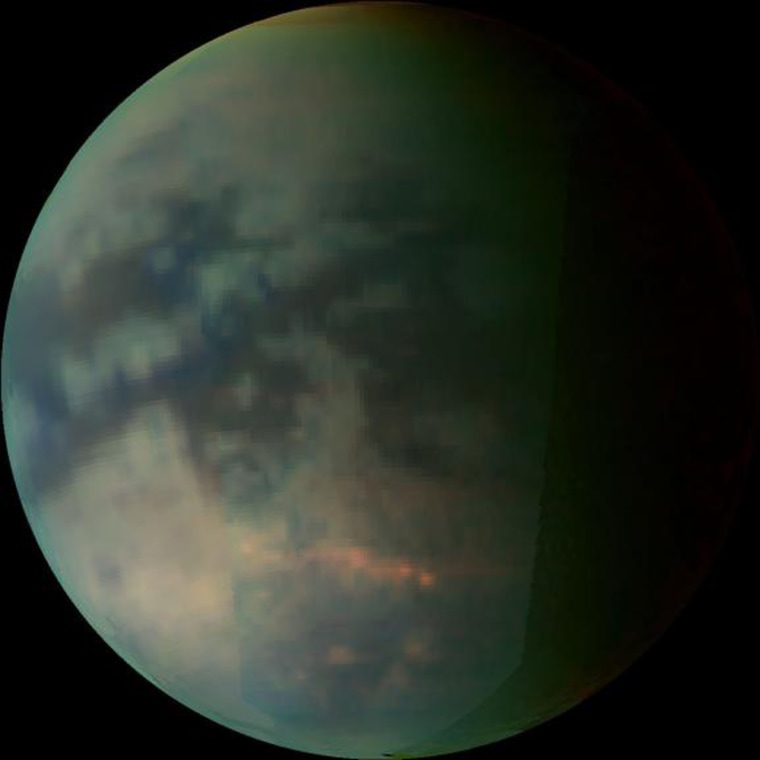Billions of years ago, Earth may have been shrouded in a blanket of atmospheric haze like that seen on Saturn's moon Titan, providing organic material that nourished our planet's earliest life forms, researchers said Monday.
Some scientists look to Titan as a model for what early Earth's atmosphere may have looked like.
They think Titan's atmosphere, packed with organic aerosol particles created when sunlight reacts with methane gas, may offer clues about Earth's climate when primitive organisms were first arising 3.6 billion years ago.
University of Colorado scientist Margaret Tolbert and her colleagues conducted laboratory experiments based on conditions in Titan's atmosphere measured last year by the Huygens space probe during the international Cassini mission.
They irradiated methane gas with an ultraviolet lamp, then mixed in carbon dioxide to see whether conditions that may have existed eons ago on Earth could yield a comparable organic haze. They found that such a haze formed in the lab using various methane and carbon dioxide concentrations.
Tolbert said the chemical composition of the haze was organic molecules that are digestible to organisms alive today and could have nourished simple living organisms along ago.
"That would have been a food source for any budding life," Tolbert said in an interview. "And it would have been, importantly, a global food source. And so life, instead of being confined to certain very special environments, could have thrived in every puddle."
Scientists previously have concentrated on isolated, extreme environments such as hydrothermal vents bursting with energy and nutrients to understand primordial life.
Slideshow 12 photos
Month in Space: January 2014
Beyond merely providing a food source for early life forms, this organic haze also may have played a role in providing the very building blocks needed for living organisms to first form, Tolbert said.
The study appears in the Proceedings of the National Academy of Sciences.
Earth was formed perhaps 4.6 billion years ago, and liquid water was present about 3.8 billion years ago. Tolbert said this haze may have been a dominant feature of Earth's early atmospheric landscape from about the time of the first evidence of life 3.6 billion years ago until the rise of the oxygen content about 2.3 billion years ago.
The thick haze not only may have nourished organisms, but may have protected them from harmful ultraviolet rays. The haze may have placed more than 100 million tons of organic material on Earth's surface annually, the study estimated.
"It's exciting to see that the early Earth experiments produced so much organic matter," Carl Pilcher, director of NASA's Astrobiology Institute in California, said in a statement.

